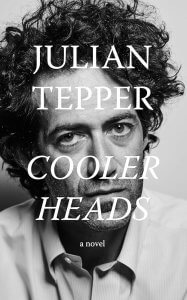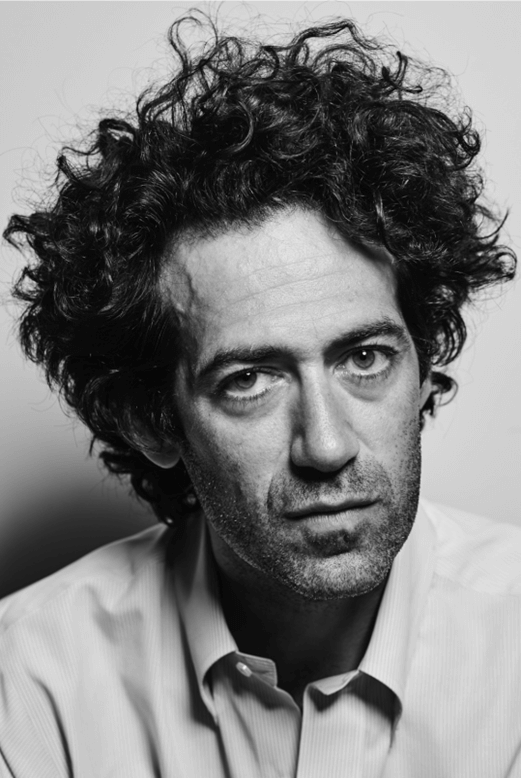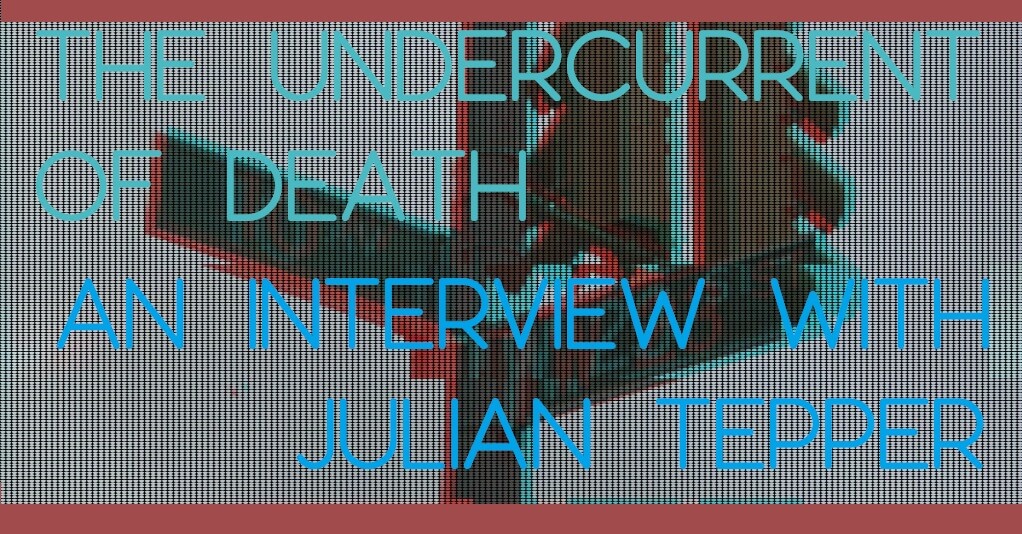 Julian and I met at KGB Bar in New York right before a reading. He was the emcee and I was one of the readers. With four novels under his belt and work published in bucket-list literary journals such as The Paris Review and Zyzzyva, Julian could’ve easily found a way to talk about his own work that night, even if just within conversations before or after the event. But he didn’t. He championed the readers, and the readers only. Julian seems to be like that in other facets of his life too, especially as it relates to his family. As someone whose lineage is embedded into the aforementioned city more than the establishments for which that very place is known, he’s the sort of guy who takes “write what you know” seriously. And pulls it off. Like in his latest novel. I asked him some questions about it. And while the overly trite “writing process” comes up, his answers are anything but.
Julian and I met at KGB Bar in New York right before a reading. He was the emcee and I was one of the readers. With four novels under his belt and work published in bucket-list literary journals such as The Paris Review and Zyzzyva, Julian could’ve easily found a way to talk about his own work that night, even if just within conversations before or after the event. But he didn’t. He championed the readers, and the readers only. Julian seems to be like that in other facets of his life too, especially as it relates to his family. As someone whose lineage is embedded into the aforementioned city more than the establishments for which that very place is known, he’s the sort of guy who takes “write what you know” seriously. And pulls it off. Like in his latest novel. I asked him some questions about it. And while the overly trite “writing process” comes up, his answers are anything but.
Claire Hopple: Your novel fleshes out the idea of a “cursed corner,” both in real estate and in life. This resonates with me, and I imagine many others too. What drove you to include this in the narrative? How do you see the concept of curses, and potential in general—whether positive or negative—in the greater picture of chance, fate, freewill?
Julian Tepper: Claire, I am so happy you bring this up first because, as you can no doubt tell from having read Cooler Heads, the subject is very dear to me. In short, I grew up in New York, and my mother was the first person to introduce me to the idea of the “cursed corner,” those corner commercial spaces that cycle through one tenant after another after another, and appear for that reason to be under the influence of a “curse.” If you’re walking down the street with your mom as a kid and she’s talking about one corner or another being cursed, naturally, an element of fear comes into play. “Curse? What do you mean? Shouldn’t we cross the street?” In this case, to the extent that I’ve never stopped thinking about the “cursed corner” and found a use for them in my work, the fear was an agent for good. Having the novel’s protagonist write about “cursed corners” as an occupation, peeling back the history on those “cursed” locations, this was tremendous fun for me. It also felt like an ideal metaphor to wrap around the couple at the center of the novel. I have no real belief in curses or fate, but they do play well in a novel.
CH: And the metaphor is spot on. Did your mom ever explain what she meant during those times in childhood or did she leave it up to you to interpret?
JT: Oh yes, she would have definitely explained. My mother loves to talk about a building, its history. I’ve inherited all of this passion and curiosity about New York from her.
CH: You write about impermanence as it relates to architecture, but also as it relates to careers and relationships. I love how you explore the differences between emptiness versus impermanence versus natural change. It really adds depth to your book. How do you think impermanence affects us as humans, so-called creatures of habit?
JT: Well, impermanence is the constant, right? And to accept that one day we’ll cease to exist and that everything we’ve created will be gone––who can possibly be okay with this? Meanwhile, change pushes in and we form habits to push back on it, to comfort ourselves, to gain some control. No question, this is one reason any writer writes. For me, the writing process––or maybe I should say the editing process––is about coming into more acceptance. I begin usually with total non-acceptance, and then write and rewrite, and sort of work through all the feelings. And so I would think that writing Cooler Heads was in part about me trying to find more acceptance about impermanence itself. Hopefully readers will find the book offers them a space to do some version of the same.
CH: Your detailed picture of a current New York City intrigues people like me, who still view it as the forefront of literally everything. What does setting mean to you in your writing overall, but also in Cooler Heads specifically?
JT: As you know, you write a novel and you have a million and one problems to sort through, setting being one of the biggest of them all. Where are we? Where is the action playing out? Is it alive? Is it working on the page? New York City is a place that I am so deeply connected to––my kids are fifth generation New Yorkers, and we’ve all been brought up to pay attention to the city and its constantly evolving landscape––and so it only makes sense to set Cooler Heads and all my novels in New York. To set a book somewhere that I didn’t have a strong handle on, an environment that I didn’t know on a cellular level, would mean deciding to create even more problems for myself. I also love writing about New York. I hope that comes through in the writing.
CH: Your work has a real flow to it. You’ve built an intriguing momentum. How do you achieve the un-put-down-able element of novel writing?
JT: I give my editor Guy Intoci credit. He and I work wonderfully together, and we both believe through and through in paring back as much of the text as possible. Every sentence has to prove its worth or else it’s gone. Really, there are few better feelings for me than cutting out text. I feel lighter afterwards! And then I don’t think any author should ignore the fact that these days the likelihood of one distraction or another interfering with your reader’s experience is so high that you are obliged to be compelling. So fear of a reader putting down the book, that’s in there, too, for sure. When someone tells me they’ve read one of my books, I usually don’t ask many questions as to why that was. I say, “You finished it? Got all the way through the last page?” And that’s good enough for me.
CH: Yeah, that feels like a miracle. Having a reader who finishes one of your books––it never gets old.
The childbirth scene is absolutely gripping. I don’t want to give anything away, but I hadn’t heard of one of the devices used before. Did your own experiences with fatherhood affect your portrayal of the main character’s fatherhood at all?
JT: I’m really glad to hear that scene’s working for you, because going off what we just spoke about as far as paring back text as much as possible, it is by far the longest scene in the book. As for my portrayal of fatherhood and my own experiences, yes, that’s all here. I was having a conversation the other night with a writer about the ethics of putting your own children in your work. Parents, siblings, extended family, sure, they deserve it! (I kid, I kid.) But your own babies? I don’t love it, and I definitely see some difficult conversations coming for me in the future. And yet fatherhood plays such a major role in my daily life––I have two sons, twelve and two––and so of course it is going to feature in my writing. I don’t see how it could not.
CH: They owe you for keeping them alive, loving them, etc. Seems like a fair trade.
From paintings to photographs to architecture, ekphrasis is prevalent in your work. To me, it’s like adding umami. What does the intersection of art and literature look like to you?
JT: Well, I admit to a general skepticism about art-writing. I feel for those who have to articulate what a physical piece of art is by means of the written word. It’s so hard to pull off well. Some people can absolutely do it. Usually, though, you can sort of feel an undercurrent of death whenever you read about art, something pulling your soul down, down, down. You just hope the artwork doesn’t suffer because of it.
 Now, of course, this is where I admit that I have done more than a little writing about art in my own work. I’ve had my reasons, all of them personal. Cooler Heads is actually the second of my novels that puts a painter at the center of the action. I wrote a novel called Ark that came out back in 2016 based on some of the experiences of my grandfather, Paul Savitt, who was a painter and had an incredible influence over me as far as my becoming a writer, choosing this life, and having a fairly rigid discipline about it all. In that book, there was much ekphrasis, because I felt a kind of responsibility to get my grandfather’s artwork on the page––a few pieces in particular––and bring it back to life, so to speak. That depiction of the artist had much to do with the solitary figure at work in the studio and the construction of a morality behind this particular stance: the sort of fuck you, I make art because I must, because I can’t see another way through. Unpacking what that means and why a person takes this position is so much at the heart of that book. Cooler Heads comes at artmaking from the other end. Early readers have already told me that this is a novel about coming to New York as an artist and what it takes to succeed. Believe it or not, I wasn’t thinking about that all too much in the process of writing the book––I was just trying to get down a story that I had to tell.
Now, of course, this is where I admit that I have done more than a little writing about art in my own work. I’ve had my reasons, all of them personal. Cooler Heads is actually the second of my novels that puts a painter at the center of the action. I wrote a novel called Ark that came out back in 2016 based on some of the experiences of my grandfather, Paul Savitt, who was a painter and had an incredible influence over me as far as my becoming a writer, choosing this life, and having a fairly rigid discipline about it all. In that book, there was much ekphrasis, because I felt a kind of responsibility to get my grandfather’s artwork on the page––a few pieces in particular––and bring it back to life, so to speak. That depiction of the artist had much to do with the solitary figure at work in the studio and the construction of a morality behind this particular stance: the sort of fuck you, I make art because I must, because I can’t see another way through. Unpacking what that means and why a person takes this position is so much at the heart of that book. Cooler Heads comes at artmaking from the other end. Early readers have already told me that this is a novel about coming to New York as an artist and what it takes to succeed. Believe it or not, I wasn’t thinking about that all too much in the process of writing the book––I was just trying to get down a story that I had to tell.
CH: Can you tell me more about this “undercurrent of death” you feel?
JT: It gets at something I’ve really been struggling with, more so than with any of the other novels: how much to explain as far as to the true-to-life events that inspired Cooler Heads. This question is always there for me in my work, but much more so in the case of this book because many of the characters are based on real people with what you might call large public profiles, and the loudmouth in me wants to say who and what it’s all about. But you have to be careful when you start to spell things out for readers. You really do. On the one hand, lawsuits! (That’s a joke. I’m not too concerned about that.) But you want to let the reader explore what’s real and what’s not real, and not steal away that experience, which is its own fun. Much more importantly, you have to leave space for the reader to step into the work, and the more you define what the work is all about, and who it’s all about, the less space that exists for a reader, a viewer, a listener, to define a piece of art and its meaning in that personal and hopefully profound way. Yes, I would say the more we say what a painting, a film, a song, a novel, is all about, the more we try and nail it down with definitions, the more life we take from it. Hence, the undercurrent of death in writing about a piece of art. Does that resonate with you?
CH: Very much so. I knew that overexplaining was a terrible idea, but I hadn’t thought much about why or how before you said that.
What role do you think jealousy plays both in the lives of your characters and in reality?
JT: Jealousy is at its cultural/social heights, don’t you think? We wake up in the morning and look at curated depictions of lives being lived at their “very best” and whether you have the skills of the mental gymnast to suppress that jealousy or not, it will inevitably have some influence over you. This is the time we live in and Cooler Heads was written now. Also, as we discussed, with New York City being so important to the book, you’re going to come across the kinds of things that excite jealousy: I count at least three very extravagant New York City homes in the book.
I don’t know that I’m thinking about jealousy in the writing, but making art, working for artists, art galleries, New York City real estate, this world I’m writing about, it all has jealousy embedded in its DNA.
CH: At one point, a character says, “Things will get worse from here.” That line stuck with me the most, because the longer we live, the more suffering, aging, dying, etc. we encounter. What do you do with that? And how does that affect your writing?

JT: I am somehow, miraculously, an optimist. But I also have to reckon with the fact that something inside of me is very good at deflecting the pressure and fear and stress that comes of knowing that things will get worse. In a sense, this novel is an investigation of that process, the “cooler head” being the person who, despite this knowledge of just how bad things will get, still finds himself able to insulate his mind and remain calm. But there’s a price for that, isn’t there? I think so, and I think the book says there is as well. And then yes, that process not only affects the writing tremendously, it’s everything that the writing is. It is the reason the writing exists in the first place. Taking that thing that’s been buried so deep inside oneself, those experiences that the mind has gone––and continues to go––to such enormous lengths to keep hidden so that life can be lived with some kind of quality, these are the things I want to write about, the things I have to write about. These are the highest stakes of all.

